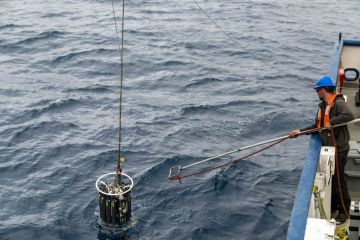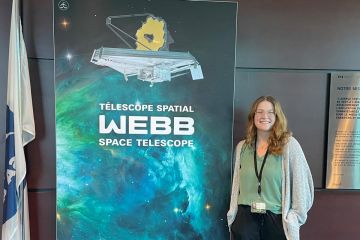Backgrounder: Work Begins On World-Class Isotopes Research Tunnel
The new Advanced Rare IsotopE Laboratory (ARIEL) at TRIUMF will house an electron linear accelerator facility (e-linac) and an underground beam tunnel. The complex allows TRIUMF to broaden its research capabilities in particle and nuclear physics and materials science, and to develop the technology to advance Canada’s supply of medical isotopes.
The e-linac portion of ARIEL – the first of its kind in Canada – is being designed and built by a 13-university consortium led by University of Victoria physicist Dean Karlen, who is jointly appointed to TRIUMF. The project also involves collaborations with researchers in the U.S., the U.K., Germany and India.
At the heart of the e-linac is a new and highly efficient way of accelerating particle beams – known as superconducting radio frequency technology. Superconductors are materials that conduct electricity with no loss of energy when cooled to very low temperatures.
The e-linac design consists of five cylinders, or cavities, placed end to end. Each cavity contains nine disc-like cells made from pure niobium, a superconducting metal often used to strengthen jet and rocket engines. When cooled, these niobium cells can store enough electromagnetic energy to accelerate particles to close to the speed of light.
At full power, the e-linac will deliver up to 500 kilowatts of beam power – the same as 5,000 light bulbs concentrated into a square centimetre.
Once it exits the accelerator, the particle beam strikes a target to produce a variety of isotopes for pure and applied research. The e-linac will advance knowledge in nuclear physics, nuclear astrophysics, and molecular and materials science.
An isotope is a variant of a basic element, as determined by the number of neutrons in its nucleus. Every chemical element has more than one isotope. An example is carbon-14 – widely used for dating organic material – which has two extra neutrons than the more abundant carbon-12.
The e-linac also opens up new avenues for the production of medical isotopes used for disease imaging and treatment. There are a limited number of facilities around the world capable of producing medical isotopes. Expanding the range of production facilities and varieties of isotopes will help maintain Canada’s leading role in worldwide medical isotope delivery and ensure reliable sources for Canadians in the future.
Superconducting radio frequency cavities are so technologically sophisticated that only five groups in the world have the ability to make them. One of these groups is a partnership between TRIUMF and PAVAC Industries in Richmond, a world leader in the development of commercial high-energy electron beam applications.
The total area of the ARIEL facility will be about 2,700 square metres. The underground beam tunnel – built with 1.8-metre concrete walls – will connect the existing TRIUMF Proton Hall with the existing ISAC-I and ISAC-II experimental halls. The e-linac will be built in the lower section of the Proton Hall.
The ARIEL facility will attract scientists from around the world to participate in experiments. It will also be a training ground for graduate and undergraduate students in the design, fabrication and operation of superconducting accelerator technology.
In this story
Keywords: work, begins, worldclass, isotopes, research, tunnel




